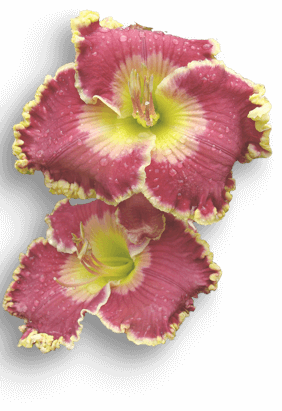These pests are often talked about but seldom seen because of their very small size and the fact that they spend a lot of time concealed between leaves and in flowers. Not all thrips are bad. There are beneficial thrips which prey on other pests. Some thrips eat fungi. Even some plant feeding thrips can be useful at times, consuming spider mite eggs in their immature stage as illustrated in the accompanying image. Daylily thrips, Frankliniella hemerocallis, is one of several types of thrips to have been reported on daylilies. Thrips are usually yellow, orange, dark brown or black. Young thrips are most often whitish or yellow but quite similar otherwise to the adults, although adults may have wings. Thrips are less than an eighth of an inch in length, usually much smaller, and there can be many generations in a year. Damage to the leaves results in light colored patches or streaking, often with blackish thrips droppings in the vicinity. Flower bud damage causes streaks, distortion and bud drop, and scapes may develop corky lesions several inches in length. Daylily cultivars vary in their susceptibility to thrips damage. Problems tend to increase in dry weather and also where plants have been heavily fertilized with nitrogen. Keeping plants adequately watered and encouraging beneficial insects should limit thrips population levels. Insecticidal soap can reduce their numbers but may not reach those hidden deeply between the leaves.

Image used with permission from University of California Statewide IPM Project, Jack Kelly Clark, photographer. Any additional uses of this image must be received from the copyright holder directly – AHS does not have permission to grant additional usage of this image for any purpose
See also: Pests

